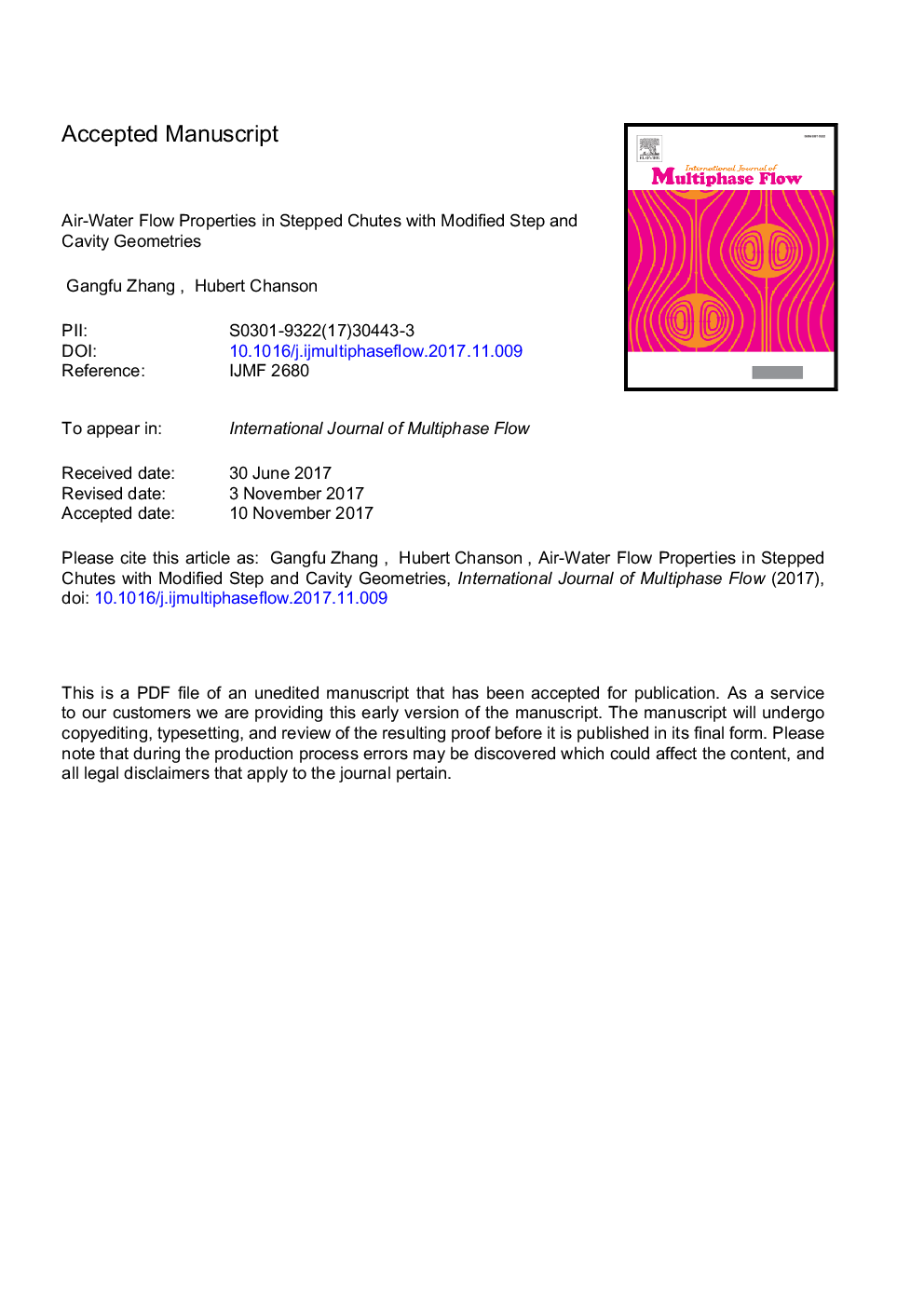| Article ID | Journal | Published Year | Pages | File Type |
|---|---|---|---|---|
| 7060200 | International Journal of Multiphase Flow | 2018 | 33 Pages |
Abstract
Skimming air-water flow properties were investigated in a stepped chute configured with triangular steps, chamfered steps, and partially blocked step cavities. The turbulent interactions between air and water were examined using a synchronised system consisting of a dual-tip phase-detection probe and a pressure transducer mounted side-by-side. In comparison to uniform triangular steps, the chamfered steps were found to cause a reduction in air entrainment and an increase in mean velocity gradient next to the pseudo-bottom. Partial cavity blockages appeared to have little effect on air entrainment, but were linked to an increased presence of large-scale structures in the overflow, which likely resulted from a reduction in mutual sheltering between adjacent step elements. The results indicated that modifications of step and cavity geometries might have significant implications on stepped chute design.
Keywords
Related Topics
Physical Sciences and Engineering
Chemical Engineering
Fluid Flow and Transfer Processes
Authors
Gangfu Zhang, Hubert Chanson,
